If you already localized your website or some landing pages, it’s a good idea to consider Google Ads localization as well. Copy-pasting texts and sending files to translators can be time-consuming, that’s why we created an app to automate Google Ads translation.
In this article, we will explore the advantages of running multilingual campaigns, and explain how Crowdin’s apps for Google Ads and Facebook Ads can help you translate your ads faster.
What are the Reasons to Translate Your Google Ads?
Translating your ad content into the language of the region you’re targeting can help you reduce advertising costs and get higher conversion rates. Let’s take a closer look at the reasons to run a multilingual campaign.
Reducing Ad Costs
Google Ads takes into account multiple factors when determining the ad quality score, which in its turn influences your ad spending. Ad relevance and landing page experience are the major factors, so if your ad is localized into the language of your target audience, it becomes more relevant to them, same goes for the landing page your ad is leading to. This way, your campaign can get higher quality scores, that can lower your cost per click (CPC).
The same goes for Increased click-through rates (CTR). Higher CTRs indicate stronger ad performance, which can positively impact your ad rank and quality score. By attracting more clicks with translated ads, you can potentially reduce ad spend by optimizing your budget allocation towards higher-performing ads.
Reaching a Wider Audience
With a localized campaign you will be able to target a wider audience, this way can also increase your brand’s visibility. Some companies report a higher ROI for localized campaigns when compared to campaigns in English targeting different locales.
Competitive Advantage
Businesses that invest in Google Ads translation can gain a competitive edge. By translating your ads you can target specific language markets that might have lower competition. If your competitors aren’t translating their ads, your campaigns will stand out. You get a chance to connect with users who prefer content in their native language, thus you get a potential to increase your market share.
Increasing Conversion Rates
By translating your ads into the language of your target audience you can expect higher conversion rates. With ads in their preferred language, users are more likely to click the link in your ad and then perform the desired action, such as purchase, form submission, or starting a trial.
Keywords Localization
It’s not enough just to translate your ads. It’s also important to use localized keywords to rank your ads higher, and use multilingual SEO best practices.
What’s keyword localization?
Keyword localization is the process of adapting keywords to meet the linguistic and cultural preferences of target markets. It goes beyond literal translation and takes into account the nuances, idiomatic expressions, and search behavior of specific locales.
What’s the difference between keyword translation and localization?
Keyword translation and keyword localization are two distinct approaches to adapting keywords for different markets.
Keyword translation involves direct translation of keywords from one language to another, without considering cultural or linguistic nuances. Localization ensures that the content aligns with the target audience’s expectations, improving search visibility and engagement.
Reasons to Localize Keywords
By using localized keywords, you improve click-through rates (CTR). Users click on your ads as they match their search intent more.
Localized keywords improve the chances of conversion. They make it easier for users to find the products, services, or information they are looking for. By aligning with the local language and search habits, companies can attract targeted organic traffic and get discovered by potential customers.
Translating keywords provides data on user behavior and preferences in different regions. It allows to refine marketing strategies and adapt to local market trends.
How to Localize Your Keywords
Collaborating with native speakers is crucial for effective keyword localization.
After translating the keys, you need to check their search volumes in the selected region.
You can find some of the keys that are not popular in the selected regions for which you plan translations after such research.
- Choose Your Target Markets.
- Do Keyword Analysis for Selected Countries.
- Determine Your Website’s URL Structure.
- Translate and Optimize Your Web Content.
- Implement Hreflang Tag.
- Establish Backlinks for Your Website.
For example, you translate a keyword from Spanish (Flysky vuelos baratos) to English(Flysky cheap flights). In the USA, this keyword has a low average monthly search, and perhaps this group of ads should not be translated:


Localize your ads with Crowdin
How to translate Google Ads with Crowdin
We know that each ad campaign has a limit of symbols, so each translation should adhere to this limit as well. It’s not easy to handle that manually, or copy-pasting each text from a spreadsheet, so we decided to create an app for that to make this process a bit easier.
Crowdin’s app for Google Ads allows you to upload your ads to Crowdin and set character limits in bulk, then you can download translated content and use ads in multiple languages in your next campaign. Let’s see how this integration works step-by-step.
Automate Google Ads Localization
- To start translating your ads you need to install a free Google Ads App into your Crowdin account. Once the app is installed you can find it in your project.
- Export your campaign as CSV file.
- Import your file into Crowdin project.
- Select ad campaigns and choose the target languages.
- Translate your ads within the characters limit. Here’s what your translators will see:
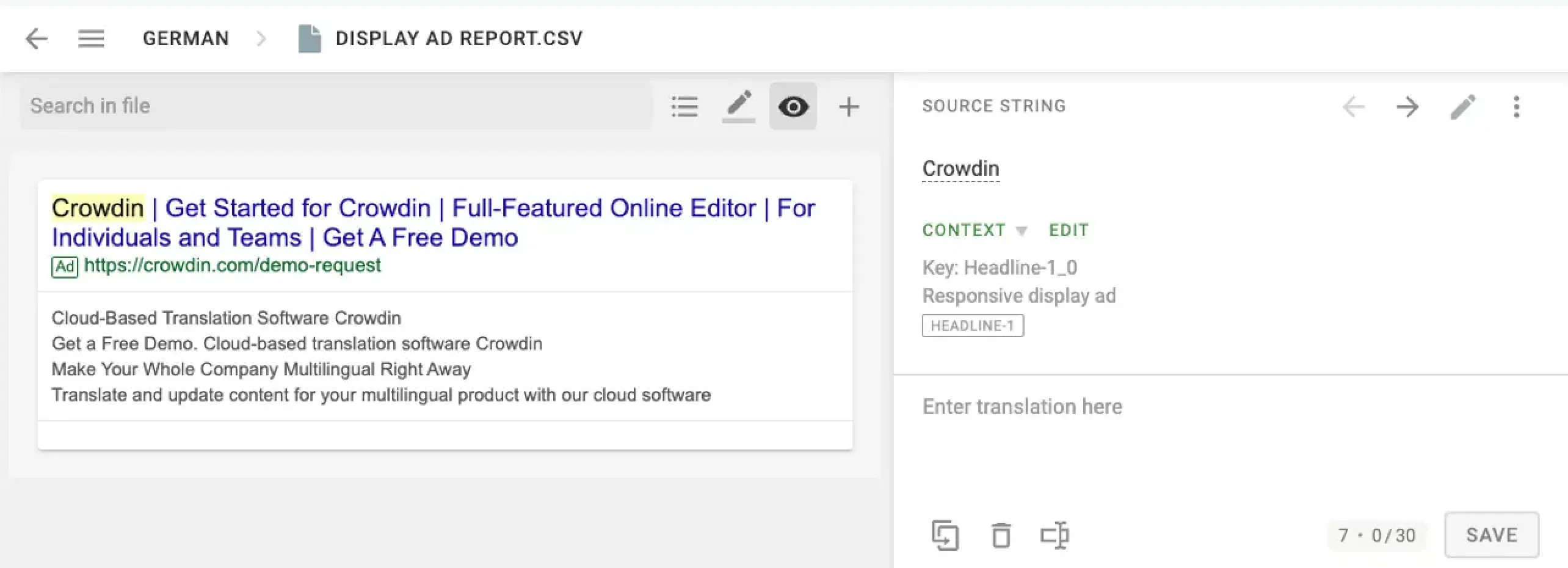
- Download your translations.
- Create new campaign to store translations.
- Sync translations back to Google Ads.
- Run your multilingual ad campaign.
Here’s also a step-by step walkthrough video for you:
Google Ads language targeting & location settings
You can only set up language targeting and geography in Google Ads at the campaign level, so each language should be set up as a separate campaign, and ad group.
Performance Metrics and Reporting
When creating a new campaign, choose the location you want to target, and the language your customers speak.
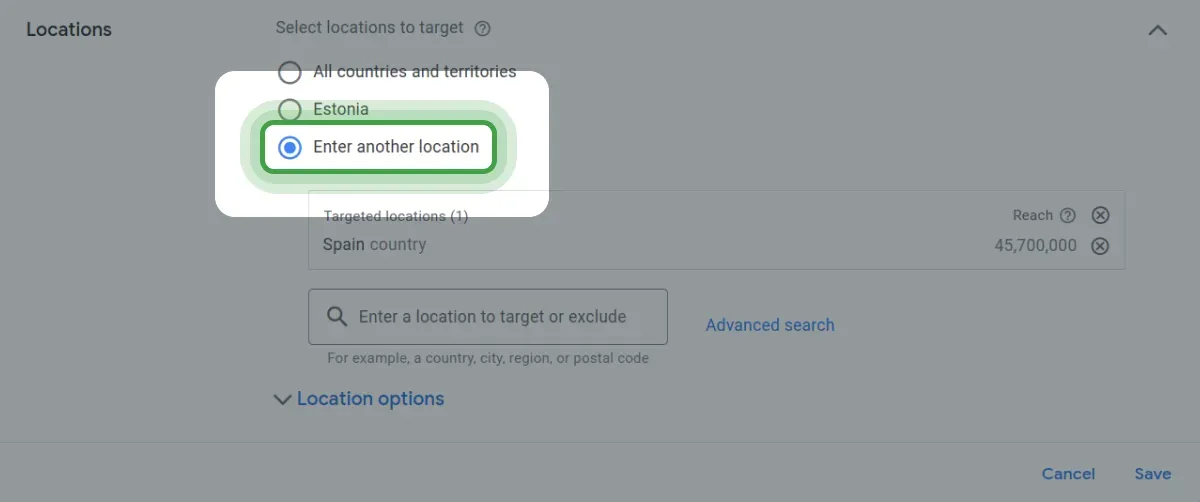

Optimization and Performance Insights
Maximize ROI by analyzing metrics such as click-through rate (CTR), conversion rate, cost per conversion, and return on ad spend (ROAS) using Google Ads performance insights.
Identify trends, patterns, and opportunities for improvement based on the performance data.
Utilize match types, negative keywords, and keyword bid adjustments to refine your targeting and improve ad relevancy.
Test different ad formats, messaging, landing page variations, and targeting options to discover what resonates best with your audience.
Regularly review and optimize your campaign settings, targeting options, and ad placements to improve overall performance.
App Details: Ad Length
Advertisements in Google Ads have a character limit for each part of the ad.
When translating the ad text, the length of the corresponding element (Headline, Description, Path) should be taken into account.
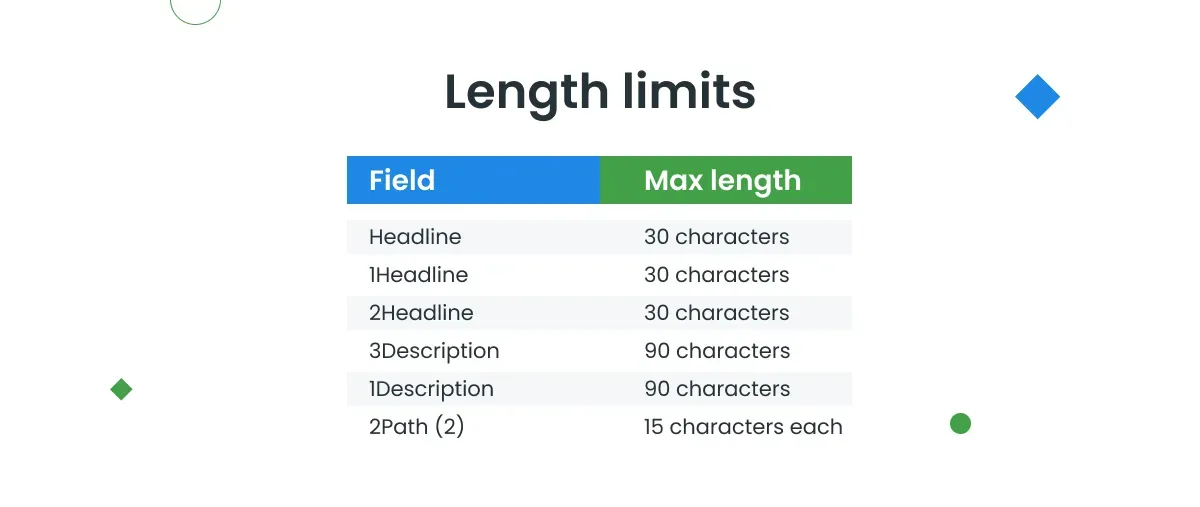
In expanded text ads, length limits are the same for all languages. In languages with double-width characters, such as Korean, Japanese, or Chinese, each character counts as two. Therefore, we recommend creating a separate project for these languages and setting a different character limit for them.
The app has settings where you can specify the required number of characters, or leave the default option.
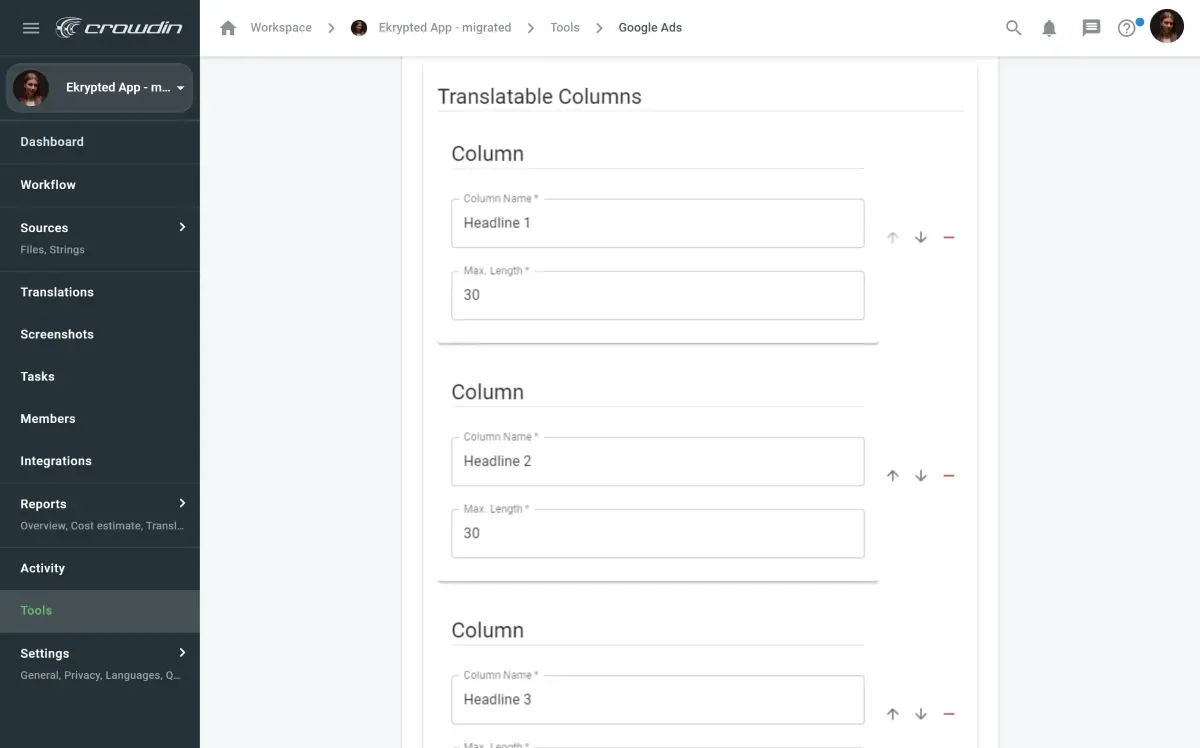
When translating the ad text, the translation may exceed the specified limits. The translator will immediately see a message in the editor about which tapes need to be changed in order to fit within the specified limits.
Assets Translation
In addition to the translation of text ads, do not forget about the translation of extensions (Assets): Sitelink, Callout, and Structured snippet.
The Impact of Translated Assets
Translation of extensions to other languages must be added at the campaign or ad group level of the respective languages. If they are added at the account level, it may happen that the extension of one language will appear next to an ad of a completely different language, which can negatively affect the CRT of such ads and will worsen the rating of your ads.
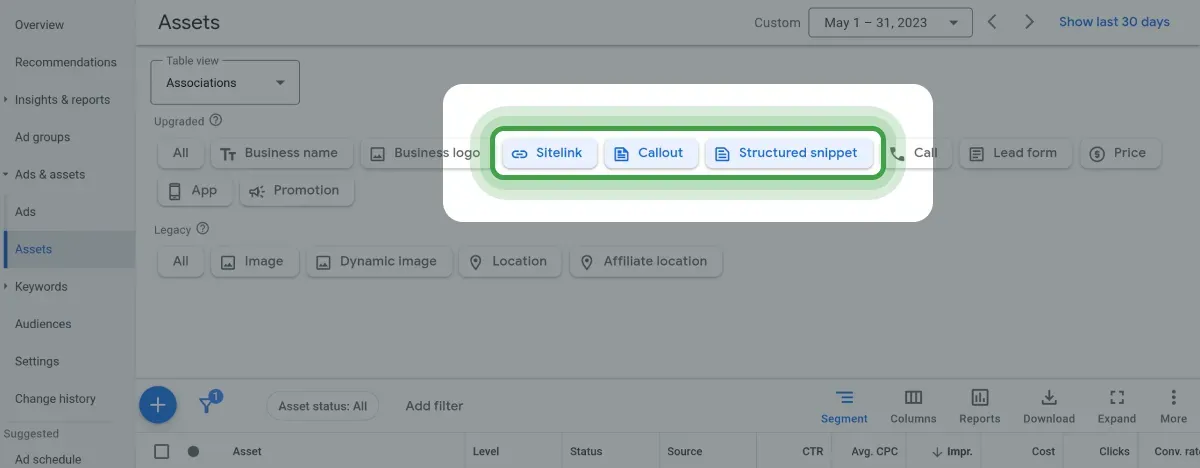
How to translate Facebook Ads with Crowdin
This integration helps easily translate ad content.
- Begin by connecting Facebook Ads App to Crowdin.
- Once the app is installed you can find it in your project.
- Export your campaign as CSV file.
- Select ad campaigns and choose the target languages.
- Translate and review. Here’s how it will look:
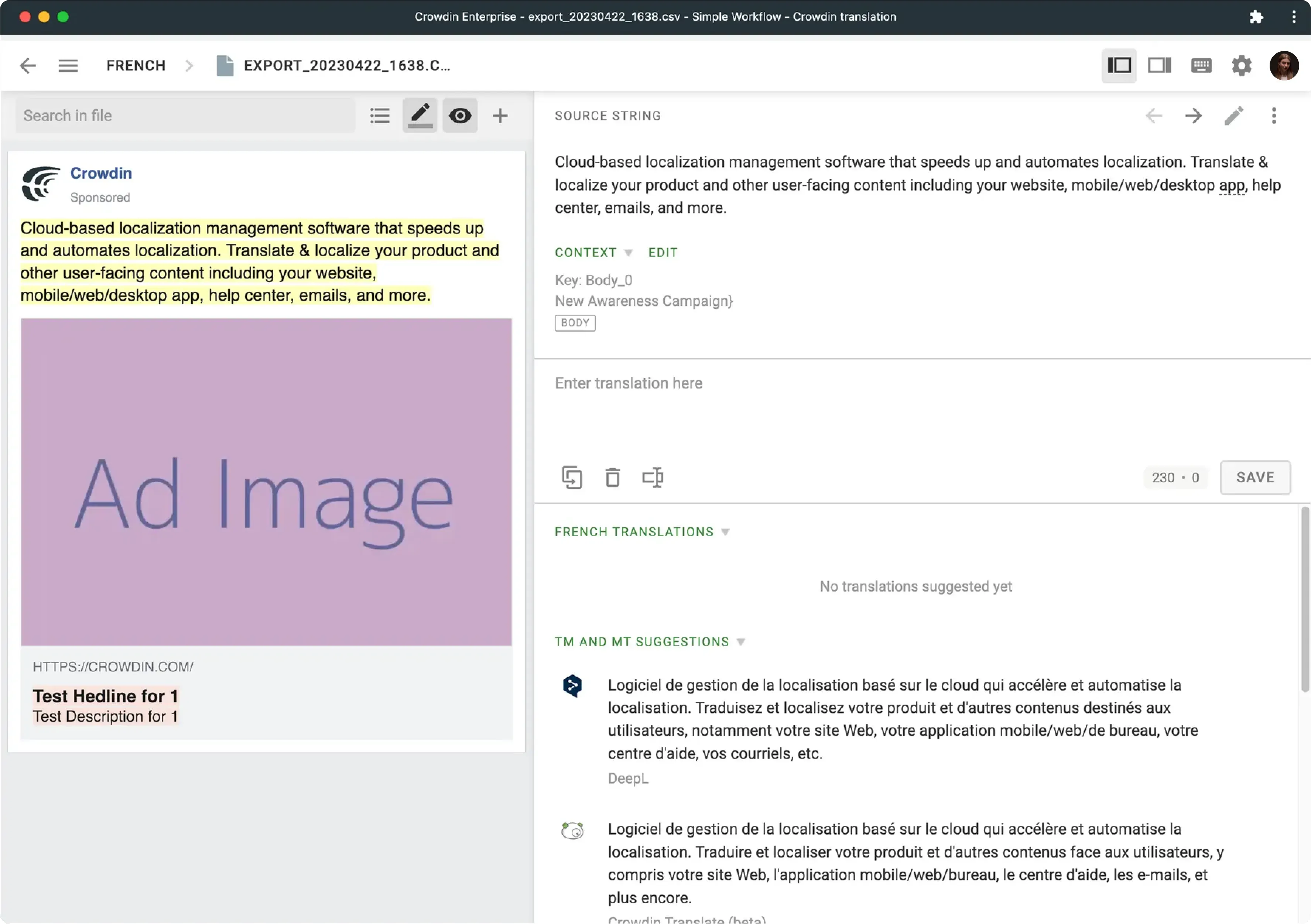
- Implement translations into Facebook Ads.
- Test and optimize.
Localizing Landing Pages
Localization of landing pages is a strategic approach that involves adapting webpage content to resonate with specific target markets.
When users encounter content in their native language, it establishes a connection of trust and familiarity.
How Landing Pages Localization Boosts SEO Ranking
Search engines, such as Google, prioritize websites that provide relevant and localized content to their users. Behavioral factors are used to evaluate a landing page: bounce rate, page view time, user-friendly navigation for different devices, and other parameters.
The information on the landing page should match the topic of the ad. If the ad mentioned a special offer, the landing page should include a description of it.
The landing page translation affects the Google Ads Quality Score. The higher the Quality Score- the cheaper the cost of a click.
What the quality of the landing page depends on:
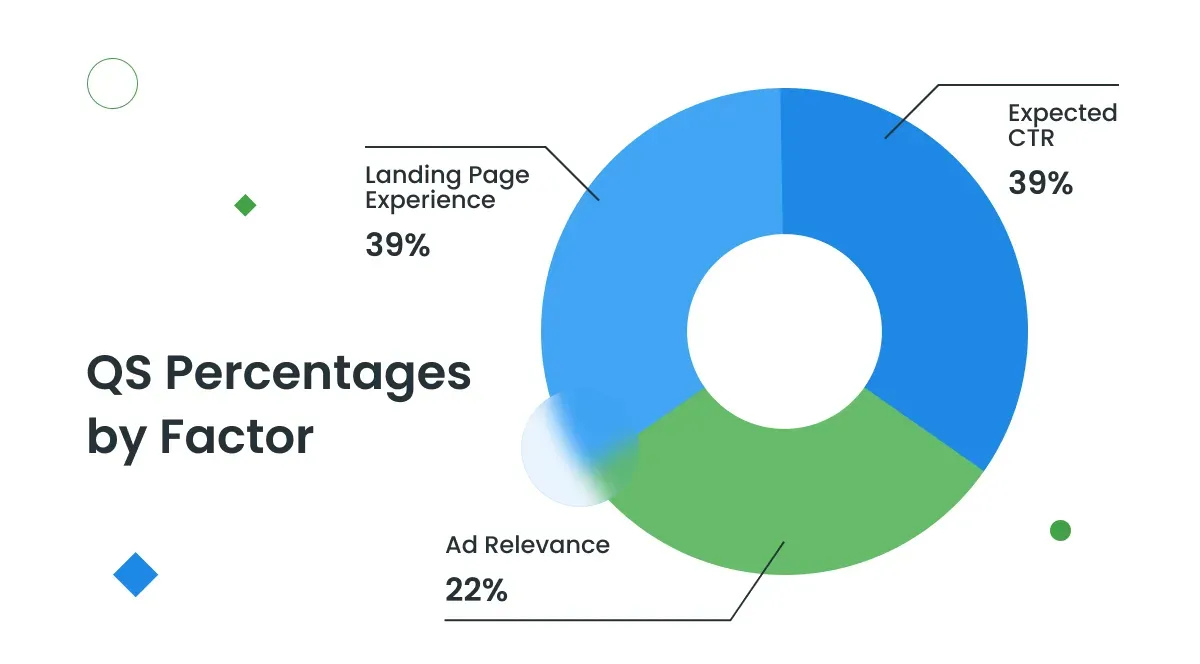
How to Localize Landing Pages?
Crowdin offers a range of features and benefits for localizing landing pages effectively.
Prepare your project
Set up a project in Crowdin and organize your landing page content. This includes text strings, images, buttons, and any other elements that require translation.
Collaborate with translators
Invite translators to work on your project. Involve your in-house team or hire professional translators through the platform. Provide clear instructions and guidelines to ensure accurate and consistent translations.
Utilize translation memory
Crowdin’s translation memory feature saves previously translated content, enabling reuse and maintaining consistency. Reduce costs and speeds up the localization process by eliminating the need for redundant translations.
Leverage machine translation
Crowdin integrates with popular machine translation engines. Review and edit the machine-translated content to ensure quality and accuracy.
Maintain context
Crowdin’s Visual Context feature allows translators to see the translated content in the context of the landing page layout. This helps them understand how the translated text will appear and ensures proper localization of elements such as buttons, labels, and headings.
Style Guides and References App
Crowdin Style Guides and References app is a tool for maintaining consistency and accuracy in translations.
The app helps translators refer to relevant, and specific information provided by customers. It provides tools to share important information about context with translators.
Users can create style guides within the app, which can be linked to specific projects, add additional files, and web links. Clear and detailed reference materials make it easier for translators to understand unique words and writing styles.
Test and review
Once the translations are complete, implement them on your localized landing pages. Thoroughly test the functionality, layout, and overall user experience to ensure everything works properly.
Continuous updates
Keep your localized landing pages up to date by syncing them with Crowdin. This way, any changes or updates made to the source content will automatically trigger translation updates, ensuring your localized pages remain relevant.
Translate your Web Pages with Crowdin
Crowdin integrates with over 200 Content Management Systems (CMS) for developers, marketers, designers, and support teams, to automate the localization process. These integrations allow users to connect their CMS platforms, such as WordPress, Drupal, or Joomla, directly with Crowdin, enabling seamless translation management and synchronization between the CMS and Crowdin projects.
With this feature you will not need to do exporting and importing of content manually. Choose one of the apps that will make it easier for you to manage and use multilingual marketing. You can also leverage Crowdin’s translation features and collaboration tools while maintaining the structure and functionality of their chosen CMS platform. Learn more about website localization.
Get Started with Localization of your Ads
Now you know how to localize your Google and Facebook Ads campaigns effectively by using features of Crowdin’s translation management platform. Don’t wait to expand your reach to new audiences, and achieve greater success in international markets.
Make your company multilingual with Crowdin
Yana Feshchuk
Yana Feshchuk is a Partnerships Marketing Manager. Her expertise lies in developing authoritative and well-researched content for the localization field.
